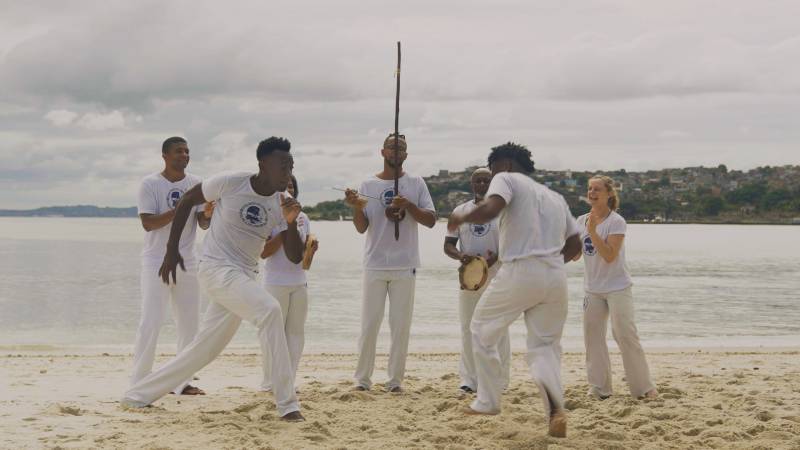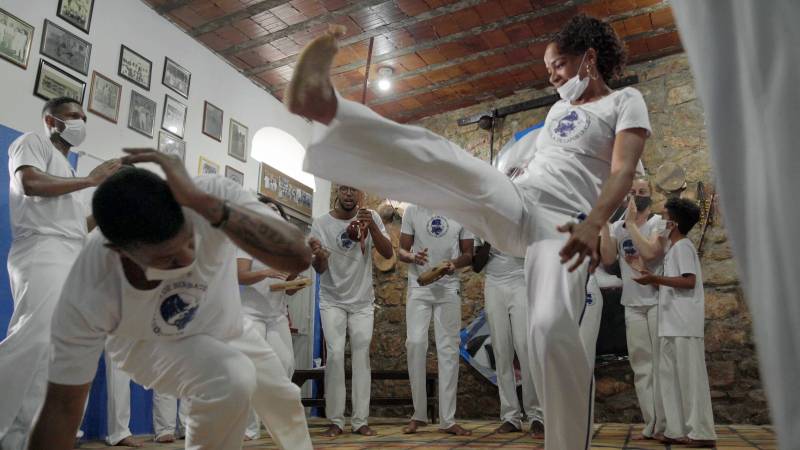Join the conversation here and subscribe to our YouTube channel to never miss a new episode.
When capoeirista Ricky Lawson II teaches new students in the Afro-Brazilian art form of capoeira, he often speaks about the deep spiritual energy in capoeira’s birthplace—Salvador, Bahia.
“It’s an ancestral energy, and it’s seen and felt and heard in the music, the songs that we sing, and in the movement. People who are more connected, when they move, they move from the soul,” says the founder of Filhos de Bimba Escola de Capoeira, Bay Area, who has trained thousands of students in the Bay.

Lawson, better known as Malandro in the Bay Area capoeira community, has traveled to Bahia nearly a dozen times since he began training more than 20 years ago in the art form that combines elements of martial arts, dance, music, philosophy and history. Each trip has deepened his practice and relationships with some of capoeira’s most important tradition bearers, including Mestre Nenel, the son of the late Mestre Bimba, who is considered the king of capoeira and helped bring it back from near extinction.

Enslaved Africans in Brazil developed capoeira, and the art form has evolved and survived through the generations, despite attempts over the years to outlaw and eliminate the practice after the abolition of slavery in 1888. Today one of the main lineages practiced is called Capoeira Regional, created by Mestre Bimba.

